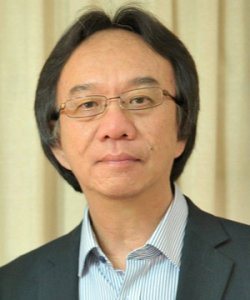
Featured Session - International Conference 2016
Enhancing L2 Learning Using Simple Technology
Technology is now an important part in second language teaching. Teachers nowadays use a wide range of technological resources for a variety of pedagogical purposes in order to help students become successful learners of English. But can technology be used in a more principled manner so that we can optimally support our students’ L2 development? The aim of this presentation is to examine how technology can be used in ways that more clearly reflect well-accepted second language learning principles (e.g., language learning is facilitated when learners receive comprehensible language input, when they get ample opportunity to notice non-salient language features, and when they engage in meaningful communication via repeated practice). I will address the following questions in my presentation:
- How can technology enhance the quantity and quality of language input?
- How can technology provide more opportunities for genuine and meaningful communication?
- How can technology be productively used to encourage noticing of non-salient language features?
- How can technology be used to help L2 learners become fluent speakers of English?
- How can technology make language learning more engaging and motivating?
This presentation is particularly relevant for English teaching professionals who are interested in the application of research-based L2 principles for effective use of technology in teaching.
_______________
Invited Second Session
Is Dadok (다독/ER) the Missing Link in L2 Learning?
According to Alan Maley (2005), Dadok or Extensive Reading (ER) is probably “the single most important way to improve language proficiency.” Curiously however, despite strong research evidence that supports Maley’s claim, ER is conspicuously absent in many L2 learning contexts.
In this presentation, I first discuss the theory behind ER and provide research evidence that supports it. I will then explore some of the main reasons why the adoption of ER in schools has been slow. The bulk of my workshop provides practical tips on starting and sustaining an ER program, including the following:
- how to select relevant extensive reading materials
- how to motivate students to read in quantity on their own
- how to organize extensive reading activities
- how to monitor student progress in their reading
- how to deal with implementation issues (e.g., lack of ER resources, lack of support from school leaders, etc.)
This workshop is particularly useful for English teaching professionals who are interested in helping their students develop a higher level of proficiency in English.
_______________
Biographical Sketch
Willy A. Renandya is a language teacher educator with extensive teaching experience in Asia. He currently teaches applied linguistics courses at the National Institute of Education, Nanyang Technological University, Singapore. Dr. Renanmdya’s most recent books include Simple, Powerful Strategies for Student Centered Learning with George Jacobs and Michael Power (2016, Springer) and English Language Teaching Today: Linking Theory and Practice with Handoyo P. Widodo (2016, Springer).
_______________
Resources on the Web: Willy Renandya
Published works on Academia website:
https://nanyang.academia.edu/WillyARenandya
KOTESOL 2013 featured speaker presentation on YouTube:
https://www.youtube.com/watch?v=tdPG6YCl96s
2016 books by Springer
http://www.springer.com/us/book/9783319388328
http://link.springer.com/book/10.1007%2F978-3-319-25712-9
See the full list of Major Speakers at the KOTESOL International Conference at https://koreatesol.org/ic2016/Major-Speakers


